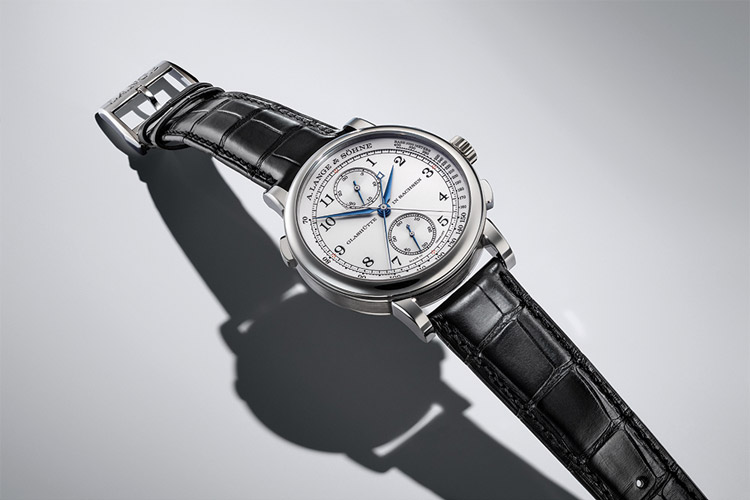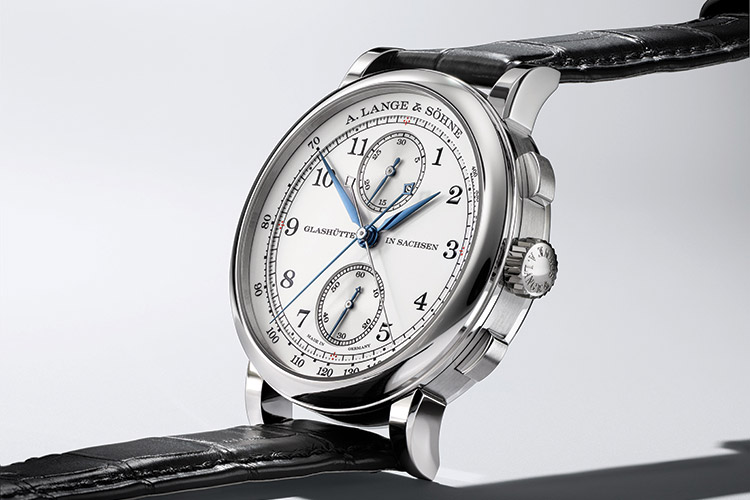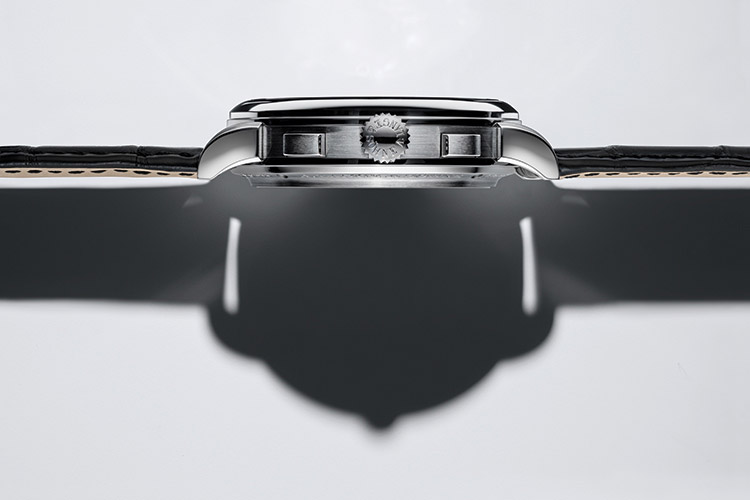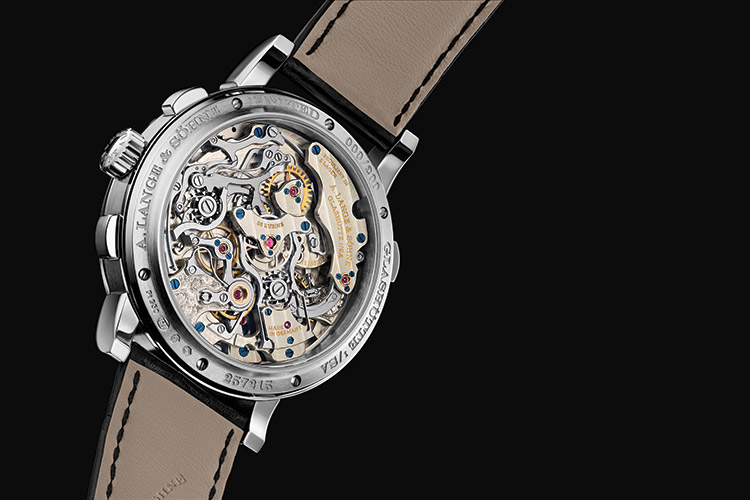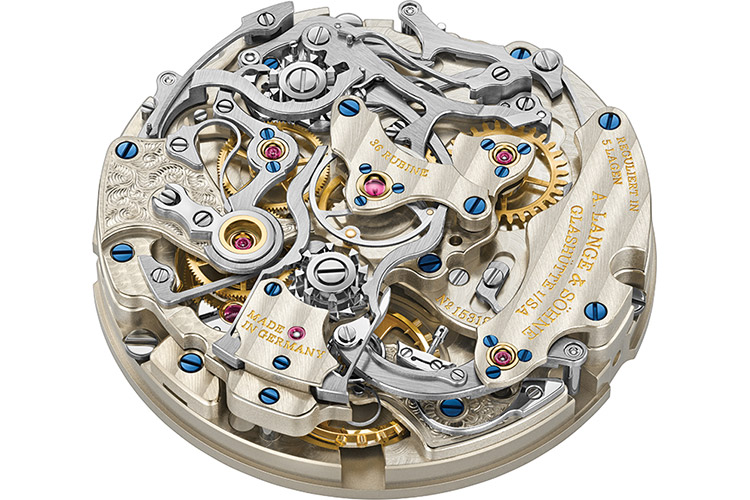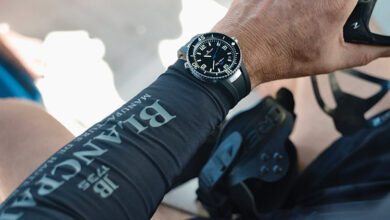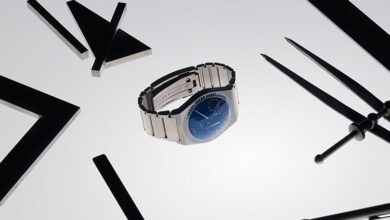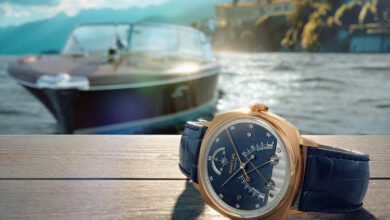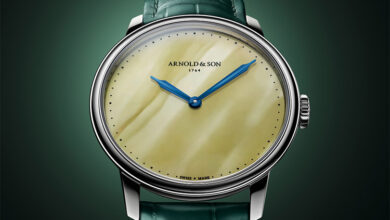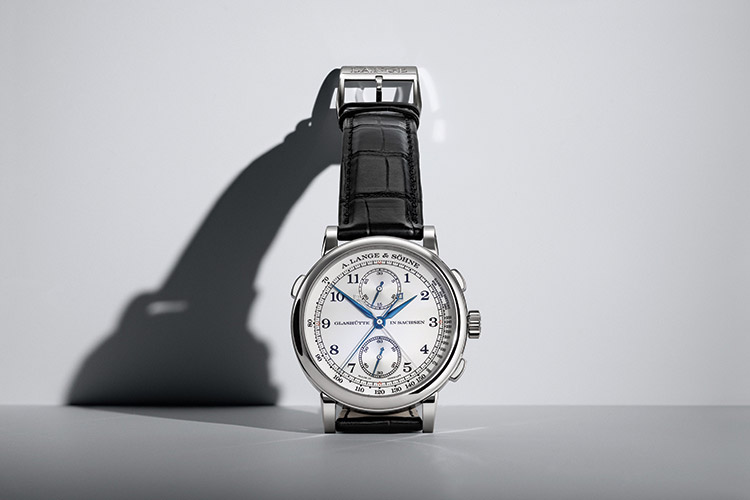
A. Lange & Söhne is enriching its 1815 model family with a timepiece featuring one of the most sophisticated horological complications: the chronograph rattrapante. The new model is fully focused on the eponymous complication and is endowed with a custom-developed movement. The 1815 Rattrapante has a platinum case and comes in a limited edition of 200 pieces
With the 1815 Rattrapante, A. Lange & Söhne’s watchmakers yet again demonstrate their expertise in the field of short-time measurement. Its complex mechanism expands the functionality of a classic chronograph by allowing the measurement of a random number of lap times within a minute. For this purpose, the watch has two superposed chronograph hands, the centre chronograph hand and the centre rattrapante hand. Both hands start together when the pusher at 2 o’clock is actuated. The centre rattrapante hand can now be stopped independently of the centre chronograph hand and then resynchronised with it. This procedure, used for instance to measure lap times, can be repeated infinitely.
The 1815 Rattrapante comes in a noble platinum case. The bright argenté-coloured dial and the dark blued hands contrast well and assure perfect legibility. The traditional style elements of the watch include the peripheral railway-track minute scale and the prominent Arabic numerals. They clearly reflect the genre that already characterised the historic Lange pocket watches and the model family that is still named after Ferdinand Adolph Lange’s birth year.
The development of their own movement makes it possible for the watchmakers to freely choose the positions of the subsidiary dials. Instead of the ordinary positions at 3 and 9 o’clock, the 30-minute counter and the subsidiary seconds dial are at 12 and 6 o’clock, respectively, on the vertical centre axis. This symmetric arrangement gives the 1815 Rattrapante a balanced and expressive personality. Additionally, the peripheral tachometer scale allows average speeds to be determined.
The timepiece is powered by the manufacture movement L101.2. The entire rattrapante chronograph mechanism is configured such that it is visible through the sapphire-crystal caseback. This allows the complex switching processes to be observed in detail. The control of elapsed and lap-time measurements is handled highly precisely in the classic manner with two column wheels. When fully wound, the mainspring barrel delivers a power reserve of 58 hours. In connection with the screw balance, also manufactured in-house, the freely oscillating Lange balance spring guarantees excellent rate accuracy at a frequency of 21,600 semi-oscillations per hour (3 hertz).
It is already the seventh calibre with this complication developed and crafted by Lange. With a special finissage, the movement was already integrated in the 1815 Rattrapante Honeygold “Homage to F. A. Lange”. With this 100-watch limited edition featuring Lange’s exclusive honey-gold alloy, the manufactory celebrated the 175th anniversary of Saxon precision watchmaking in 2020.
The finissage of the calibre, which was manually assembled twice, reflects the tradition of Ferdinand Adolph Lange: His movements always stood out with prominent design elements as well as inimitable aesthetic details. As befits the 1A quality attribute – the highest quality category of his pocket watches – the calibre L101.2 movement features bridges and cocks made of untreated German silver, a screw balance, screwed gold chatons that secure the jewels and a hand-engraved balance cock. Paired with the latest-generation watchmaking skills, these traditional elements unite to form a micromechanical fusion of the arts.
All upper sides of the moving parts of the rattrapante chronograph – such as levers, springs and jumpers – are decorated with straight graining while the peripheral chamfers are polished. Bevel-polishing re-entrant angles is a particular challenge for the finishing specialists. Only experienced artisans will succeed in polishing the corners acutely and so they are truly sharp.
The conceptualisation and production of top-flight chronographs, especially of split-seconds chronographs, is regarded as one of the most difficult challenges in precision watchmaking. In 2004, for the first time in the history of precision watchmaking, A. Lange & Söhne created a double rattrapante chronograph that extended the range of intermediate time measurements from 60 seconds to 30 minutes: the Double Split. Presented in 2018, the Triple Split benchmarked the current state of the art in rattrapante function developments.
With the addition of a third, separately stoppable hand pair, the chronograph and rattrapante functions can be used for measurements that last up to 12 hours. To this very day, both timepieces are unique in precision watchmaking. Now, the new 1815 Rattrapante comes into the focus as a classic interpretation of the split-seconds mechanism, indeed as a singular complication. It makes its appearance in a platinum case with a diameter of 41.2 millimetres. Lange’s engineers succeeded in limiting the height of the case to 12.6 millimetres despite the technical complexity of its 365-part manually wound calibre. Given its horological intricacy, this masterpiece is limited to a global 200-piece edition.
